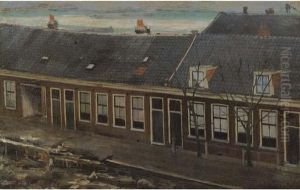Cornelis Gerardus 'T Hooft Paintings
Cornelis Gerardus 't Hooft, a Dutch painter born in the mid-18th century, is not among the most widely recognized artists in art history, and thus, detailed information about his life and works is limited. Born in 1746, 't Hooft was a product of the Dutch Republic's cultural landscape, which was known for its rich artistic traditions, particularly in painting.
During his lifetime, 't Hooft would have been influenced by the Dutch Golden Age's legacy, although he was born well after this period. The Golden Age, spanning the 17th century, was characterized by great wealth and cultural achievements, with artists like Rembrandt, Vermeer, and Frans Hals shaping the artistic heritage that 't Hooft would have encountered.
Little is documented about 't Hooft's training and early career, but it is likely that he worked within the established traditions of Dutch art, which by the 18th century, had become more diverse, including genres such as landscape, still life, portraiture, and genre scenes. 't Hooft's style would have been influenced by these genres, though the specifics of his contributions to them are not well recorded.
Cornelis Gerardus 't Hooft died in 1816, leaving behind a modest legacy compared to the towering figures of Dutch art from previous centuries. His works may not have received the same level of recognition or preservation as those of his more famous predecessors, leading to a scarcity of information about his artistic output. Despite this, 't Hooft remains a part of the broader narrative of Dutch art history, representing the artists who continued to work and maintain local artistic traditions into the late 18th and early 19th centuries.
